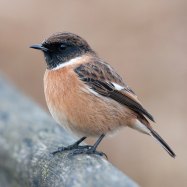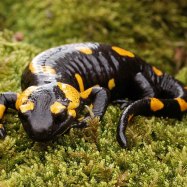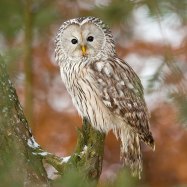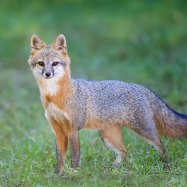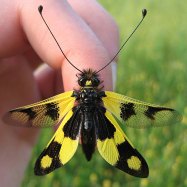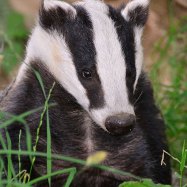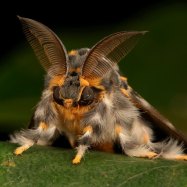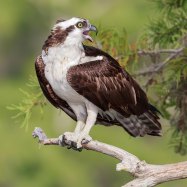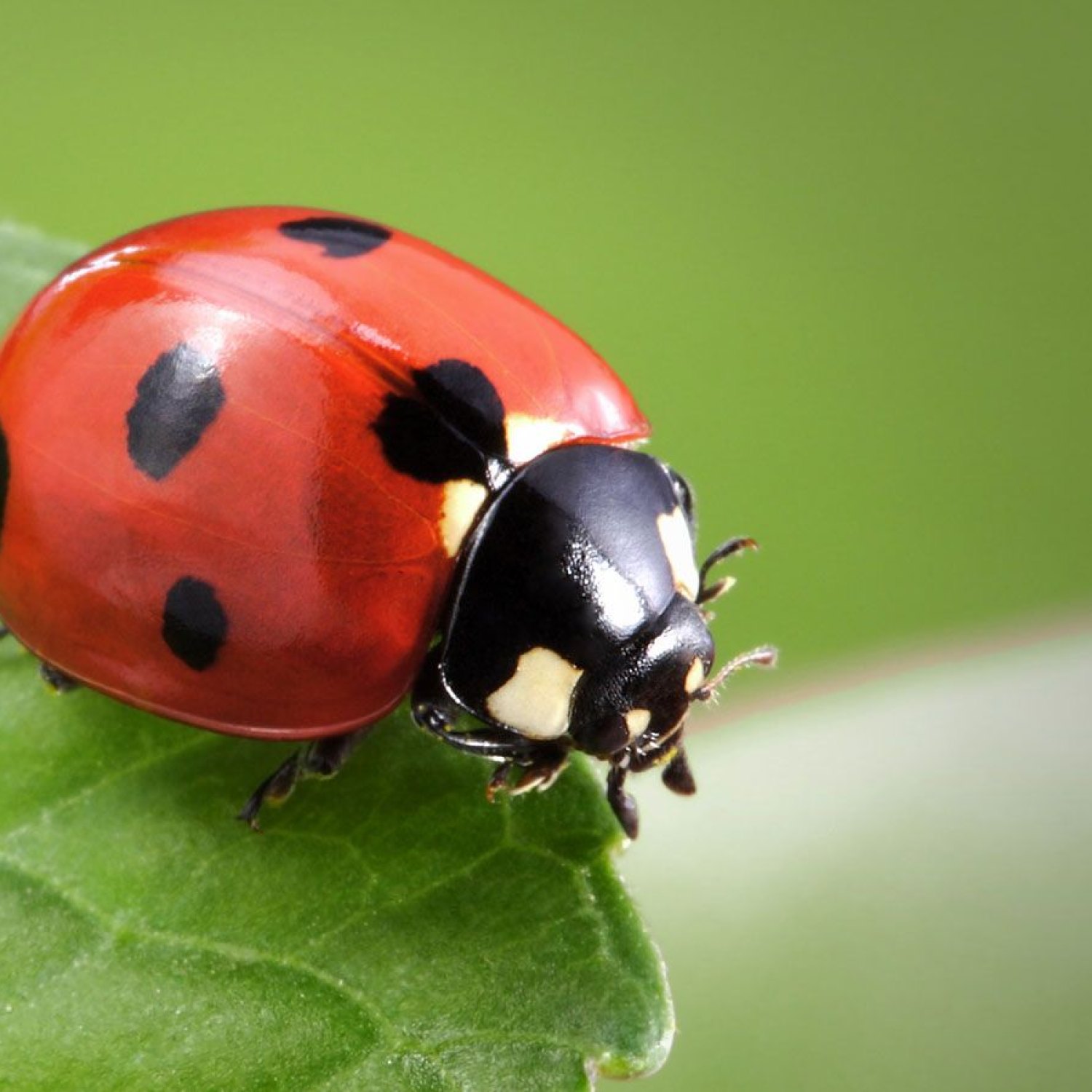
Ladybug
0.2 to 0.4 inches
The Ladybug is a tiny but mighty insect found in North America, Europe, and Asia. These colorful creatures belong to the Coccinellidae family and are known for their rounded body shape. Ranging from 0.2 to 0.4 inches in length, ladybugs are great at controlling aphid population in gardens. #Ladybug #Coccinellidae #insects #gardening
Animal Details Summary:
Common Name: Ladybug
Kingdom: Animalia
Habitat: Gardens, meadows, forests
The Fascinating World of Ladybugs: Nature's Tiny Miracle Workers
Ladybugs are one of the most beloved and recognized insects in the world. These tiny creatures, also known as ladybirds or lady beetles, capture our hearts with their bright colors and adorable appearance. However, there is much more to these little insects than meets the eye. With their fascinating life cycle, unique abilities, and important role in nature, ladybugs are truly nature's tiny miracle workers Ladybug.Meet the Ladybug: A Colorful Insect with a Worldwide Presence
Scientifically known as Coccinella, ladybugs are a species of small beetles belonging to the family Coccinellidae. They can be found all over the world, with over 6,000 species recorded, making them one of the most diverse and widespread insect families on Earth.Ladybugs are commonly found in gardens, meadows, and forests, but they are also present in urban areas, such as parks and backyards. They are also well-known for their ability to thrive in different climates, making them one of the most adaptable insects in the world. Ladybugs can be found in North America, Europe, Asia, and in some parts of Africa and South America.
These tiny insects come in a variety of colors, including red, orange, yellow, and black, with black spots on their wings. Their bright and distinctive coloration serves as a warning to potential predators, as many ladybug species are poisonous and have a foul taste. This natural defense mechanism is known as "aposematic coloration," and it helps keep these insects safe from harm.
A Closer Look at the Anatomy of Ladybugs
Ladybugs are part of the animal kingdom, the phylum Arthropoda, and the class Insecta Lake Trout. They belong to the order Coleoptera, which means "sheath-winged" in Greek, and the family Coccinellidae, which comes from the Latin word "coccineus," meaning "scarlet."These insects have a distinctive body shape, with a rounded and domed appearance. Their body is divided into three main parts: the head, thorax, and abdomen. They have six short legs, two antennae, and a pair of translucent wings that they use to fly. Ladybugs also have a hard exoskeleton that protects their body and gives them resilience against potential predators.
Their size can vary, but most ladybugs measure between 0.2 to 0.4 inches in length. Despite their small size, they are powerful flyers and can travel long distances in search of food and suitable habitats.
The Life Cycle of Ladybugs: An Unexpected Transformation
The life cycle of a ladybug begins when a female lays her eggs on a plant leaf or stem. These tiny yellow eggs, known as "globose," are often laid in clusters of 10 to 50 and are attached to the plant by a sticky substance.Once hatched, the larvae emerge from the eggs and start their journey towards adulthood. The larvae are long, black, and spiky, and they can often be mistaken for tiny caterpillars. They have a strong appetite and feed on insects such as aphids, scales, and mites. This is why ladybugs are considered beneficial insects, as they help control pest populations in gardens and agricultural crops.
As the larvae grow, they go through several molting stages, shedding their skin to reveal a new exoskeleton. After reaching their final stage of development, the larvae attach themselves to a leaf or stem and enter the pupal stage. It is during this stage that they undergo a miraculous transformation. They form a cocoon around their body and begin their metamorphosis into a fully grown ladybug, complete with wings and their distinctive coloration.
Once they emerge from the cocoon, the adult ladybugs begin their journey of finding a mate and reproducing, continuing the cycle of life.
The Predatory Nature of Ladybugs: Nature's Pest Controllers
Ladybugs are known for their voracious appetite and are considered predatory insects. They feed on a variety of insects, including aphids, scales, mites, and other soft-bodied pests. This has earned them the nickname "aphid lions" for their ability to control aphid populations in gardens and agricultural fields.One of the most incredible features of ladybugs is their ability to consume up to 5,000 aphids in their lifetime. This makes them an essential asset for farmers and gardeners, as they help control pest populations and prevent potential damage to crops and plants.
Not only do they provide pest control, but their presence also leads to a more balanced ecosystem, promoting biodiversity and benefiting other species such as birds and reptiles that also feed on insects.
The Secret to Ladybugs' Longevity and Survival
Ladybugs have a unique ability to survive in different environments and conditions, making them one of the most resilient insects in the world. They are cold-blooded creatures, which means that their body temperature is regulated by the external environment, allowing them to function in extreme temperatures.During the winter months, ladybugs go into a state of diapause, which is similar to hibernation. They find a warm and sheltered spot to spend the cold months, and their metabolism slows down to conserve energy. This enables ladybugs to go without food or water for several months, making them one of the longest living insects, with some species living up to two years.
The Symbolism and Superstitions Surrounding Ladybugs
Ladybugs have captured the hearts and imaginations of people for centuries. They are often used as symbols of luck, love, and protection. In many cultures, seeing a ladybug is considered a sign of good fortune and a reminder to appreciate the small and simple things in life.In some countries, such as Germany and Sweden, ladybugs are also believed to have healing powers and are used in traditional medicine. They are also seen as a symbol of love and are often given as gifts to show affection and appreciation.
In contrast, some superstitions believe that harming ladybugs brings bad luck and can even result in a loss of their milk supply in cows, leading to a decrease in dairy production. This idea has been debunked by science, but it speaks to the reverence and respect that ladybugs have held in many cultures for centuries.
The Threats Facing Ladybugs and How You Can Help
Despite their adaptability and resilience, ladybugs are facing threats that could impact their populations. Habitat loss, pesticide use, and climate change are some of the factors that are putting these tiny insects at risk.As humans encroach on natural habitats and use chemicals to control pests, ladybugs and other beneficial insects are often harmed in the process. Additionally, the changing climate can affect the ladybugs' food sources and reproductive patterns, leading to a decline in their populations.
However, there are ways that we can help protect ladybugs and ensure their survival. Simple actions, such as planting native plants and avoiding the use of harmful chemicals in gardens and farms, can provide a suitable habitat for ladybugs to thrive.
Moreover, educating ourselves and others about the important role that ladybugs play in our ecosystems can also lead to more mindful and sustainable practices. As we learn to appreciate and coexist with these tiny creatures, we can help ensure that they continue to be a vital part of our world for generations to come.
In Conclusion
Ladybugs may seem like just another colorful insect, but they are actually fascinating creatures with extraordinary abilities. From their life cycle to their predatory nature, and their significance in different cultures, ladybugs continue to captivate us with their unique traits and behaviors.But beyond their charm and cuteness, ladybugs play a crucial role in our environment and serve as a reminder of the interconnectedness of all living beings. As we continue to learn more about these tiny miracle workers, let us also do our part in preserving their habitats and appreciating their presence in our world.

Ladybug
Animal Details Ladybug - Scientific Name: Coccinella
- Category: Animals L
- Scientific Name: Coccinella
- Common Name: Ladybug
- Kingdom: Animalia
- Phylum: Arthropoda
- Class: Insecta
- Order: Coleoptera
- Family: Coccinellidae
- Habitat: Gardens, meadows, forests
- Feeding Method: Predatory
- Geographical Distribution: Worldwide
- Country of Origin: Asia
- Location: North America, Europe, Asia
- Animal Coloration: Red, orange, yellow, black
- Body Shape: Rounded
- Length: 0.2 to 0.4 inches
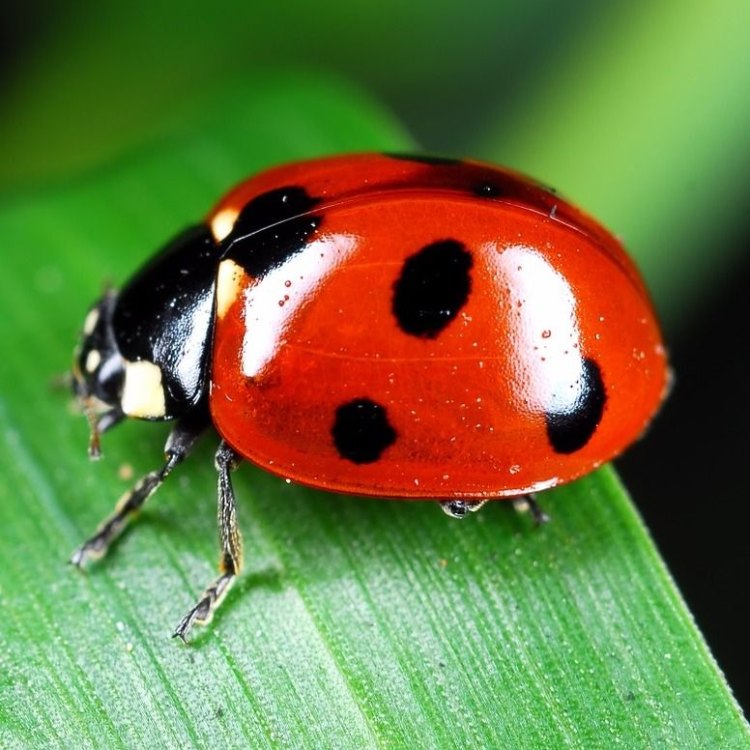
Ladybug
- Adult Size: 0.2 to 0.4 inches
- Average Lifespan: 1 to 2 years
- Reproduction: Sexual
- Reproductive Behavior: Mating and laying eggs
- Sound or Call: None
- Migration Pattern: None
- Social Groups: Solitary
- Behavior: Predatory, cannibalistic
- Threats: Pesticides, habitat loss
- Conservation Status: Not evaluated
- Impact on Ecosystem: Biological pest control
- Human Use: None
- Distinctive Features: Dome-shaped body, distinctive spots
- Interesting Facts: Ladybugs are considered beneficial insects as they prey on aphids and other plant-eating pests. They are believed to bring good luck in many cultures.
- Predator: Birds, spiders, insects
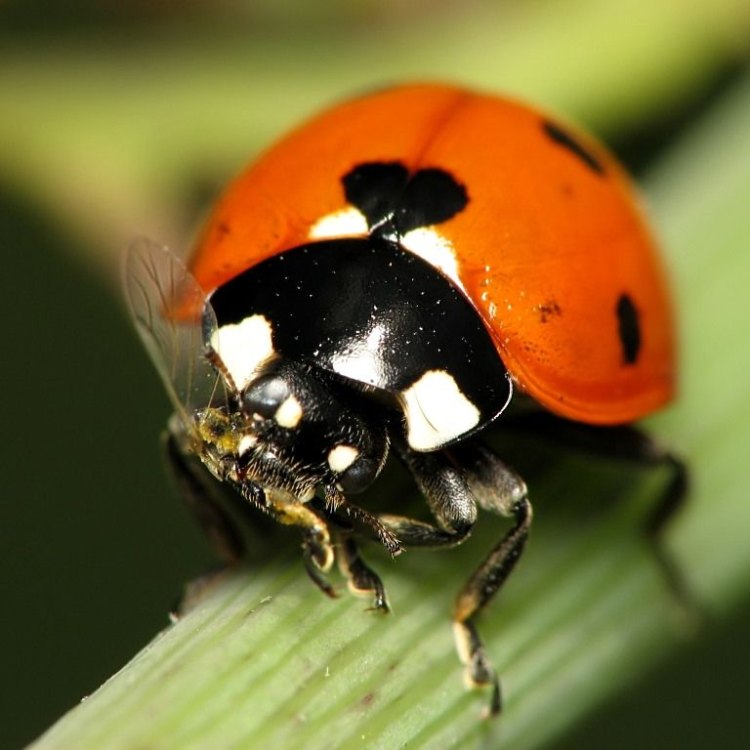
Coccinella
The Fascinating World of Ladybugs
When we imagine insects, the first image that comes to mind might not be that of a ladybug. Often overlooked, these tiny creatures have a lot more to offer than just being a speck of color on a leaf. With their interesting behavior, unique features, and importance in the ecosystem, ladybugs have a captivating story to tell.Let's dive into the world of ladybugs and discover the secrets of these fascinating creatures PeaceOfAnimals.Com.
Size and Lifespan
Ladybugs, also known as ladybirds or lady beetles, are tiny insects belonging to the Coccinellidae family. The average size of an adult ladybug ranges from 0.2 to 0.4 inches, making them one of the smallest beetles in the world.Despite their small size, ladybugs have a relatively long lifespan compared to other insects. On average, they can live for 1 to 2 years, with some species even surviving up to 3 years. This is quite remarkable for such a small creature.
Reproduction and Mating Behavior
Like most insects, ladybugs reproduce sexually. This means that both male and female ladybugs are needed for reproduction Luna Moth.During the mating season, male ladybugs attract females by releasing a chemical pheromone. Once the female ladybug is attracted, the male ladybug clasps onto the female's back to mate. This process can take up to 2 hours, with the male ladybug continuously producing vibrations to keep the female interested.
After mating, the female ladybug lays her eggs on the underside of leaves, usually near a food source. The eggs hatch within a few days, and the newly hatched larvae continue their growth by feeding on the same food source as their parents.
Sound and Migration Patterns
One interesting fact about ladybugs is that they do not make any sound or call. Unlike other insects, ladybugs do not have the ability to produce sounds or communicate through them. However, they use chemical signals, such as pheromones, to attract potential mates.Another unique feature of ladybugs is that they do not have a migration pattern. Unlike birds or butterflies, ladybugs do not travel to different regions during specific times of the year. They prefer to stay in the same area, as long as there is a steady supply of food and suitable breeding conditions.
Social Groups and Behavior
Ladybugs are solitary creatures, meaning they prefer to live alone rather than in groups. However, they do gather in large numbers during the hibernation period, where they look for shelter in warm and cozy places.When it comes to behavior, ladybugs are known for their predatory and cannibalistic nature. They are voracious eaters, feeding on various small insects and their larvae, such as aphids, mites, and scales. Interestingly, ladybugs are also known to prey on each other, with the larger ones sometimes feeding on smaller ones.
Threats and Conservation Status
Despite their toughness and resilient nature, ladybugs face several threats in their natural habitats. The use of pesticides in agriculture is one of the significant threats to ladybugs. These chemicals, meant to kill pests, also harm beneficial insects like ladybugs, ultimately disrupting the ecosystem's balance.Habitat loss is another threat faced by ladybugs. With the constant development and urbanization, many natural areas where ladybugs thrive are destroyed, leaving them with limited places to live and breed.
Unfortunately, due to their small size and often overlooked status, the conservation status of ladybugs has not been evaluated by the IUCN Red List. However, it is crucial to protect and conserve these little creatures to maintain the balance of our ecosystem.
The Impact of Ladybugs on Ecosystem
One of the most significant contributions of ladybugs to the ecosystem is their role in biological pest control. Ladybugs are natural predators of aphids and other plant-eating pests, making them an essential part of an ecosystem's health.Insects like aphids can cause significant damage to crops and plants, leading to billions of dollars in economic losses each year. Ladybugs help control these pests, reducing the need for harmful pesticides and promoting sustainable farming practices.
Human Uses of Ladybugs
Ladybugs are not only beneficial for the ecosystem, but they also have a significant impact on human cultures. In many cultures, ladybugs are considered symbols of good luck, appearing in folklore and superstitions.In ancient times, farmers believed that when ladybugs were spotted in their crops, it meant a good harvest was on the way. They were also seen as a sign of protection against natural disasters and evil forces.
Distinctive Features and Interesting Facts
Ladybugs are easily recognizable with their bright and vibrant colors. They have a dome-shaped body with six legs and a distinctive spot pattern on their wings. Interestingly, some species of ladybugs have spots, while others have stripes or even no markings at all.Apart from being beneficial to the ecosystem, ladybugs also have some intriguing facts that make them stand out from other insects. In many cultures, ladybugs are considered lucky, and in some countries, they are even kept as pets in gardens.
Some cultures also believe that the number of spots on a ladybug's back can indicate a person's age or how much good luck they will receive. In some Eastern European countries, a ladybug is seen as a messenger of love and is used as a symbol for finding true love.
Predators of Ladybugs
Despite their beneficial role in the ecosystem and significant cultural significance, ladybugs also have predators that threaten their survival. Birds, spiders, and other insects, such as lacewings and praying mantises, are known to feed on ladybugs.To protect themselves, ladybugs have developed some defense mechanisms such as playing dead, hiding in small spaces, and secreting an unpleasant-smelling fluid from their legs.
In Conclusion
Ladybugs may seem like small, insignificant creatures, but they have a big impact on our world. From their unique features and interesting behaviors to their importance in the ecosystem and cultural significance, ladybugs have an incredible story to tell.As humans, it is crucial to appreciate and protect these tiny insects, as they play a vital role in maintaining the balance of our ecosystem. Next time you see a ladybug, take a moment to observe and appreciate its beauty and significance in our world. Who knows, it might just bring you some good luck.
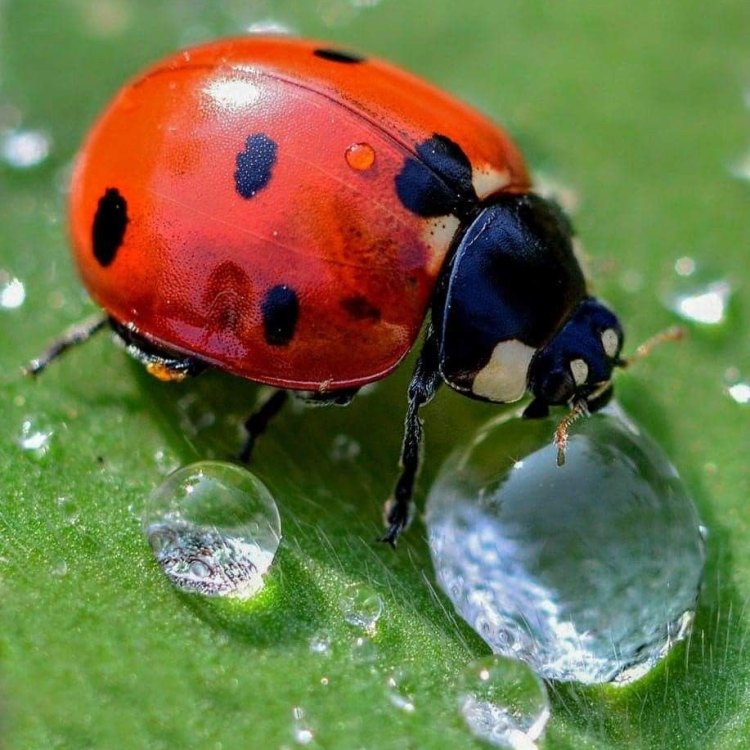
The Fascinating World of Ladybugs: Nature's Tiny Miracle Workers
Disclaimer: The content provided is for informational purposes only. We cannot guarantee the accuracy of the information on this page 100%. All information provided here may change without prior notice.

